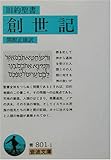Giles Fraser*1 “The Mosul dam is crumbling. If it bursts, it would be a disaster on a biblical scale” http://www.theguardian.com/commentisfree/belief/2016/mar/10/the-mosul-dam-is-crumbling-if-it-bursts-it-would-be-a-disaster-on-a-biblical-scale
イラクのティグリス川上流にある「モースル・ダム」*2。サダム・フセインによって1985年に建設されたが、「水溶性の石膏(soluble gypsum)」の上に建てられており、そもそもの構造的不安定さを抱えている。しかも、このダムはISISとそれに対するクルド人抵抗勢力の戦争の「最前線」にある。2014年にISISが奪取し、その数週間後にクルド人側が奪還している。そうした中、ダムのメンテナンスはなおざりにされる。最近、バグダッドの米国大使館はダムが決壊する危険が極めて高いことを警告した。決壊すれば、4時間後にはモースルの街*3が水没し、77時間後にはバクダッドが水浸しになる。死者は数百万人に上る*4。
この大洪水を引き起こす危険が高いといわれているダムの附近は、1844年に『ギルガメシュ叙事詩』が発見された場所であり、そこで語られている洪水説話こそ、聖書『創世記』の洪水説話(ノアの方舟の話)の原型とされているのだった。
As I read about this story, thousands of tiny connections started pinging off in my head. For it was on the outskirts of the city of Mosul, just a few miles from where the dam now creaks under the pressure of water, that in 1844 the young English explorer Austen Henry Layard*5 first discovered the ruins of the lost city of Nineveh and its magnificent library of clay tablets. Back then, no one could read their curious markings and they were shipped back to the British Museum for scholars to study.Decades later, in 1872, working on a mid-7th-century-BC tablet in the museum’s storerooms, the amateur enthusiast George Smith*6 made an astonishing discovery. He began to read a story that sounded remarkably like another story many knew from Sunday school. The god Ea warned Utnapishtim about a coming flood. He was to build a large boat, to specific instructions. He was to fill the boat with “all the beasts and animals of the field”. The flood lasted six days and nights, after which the boat came to rest on the top of a mountain. Utnapishtim then sent out a dove, a swallow and a raven to seek out dry land*7. In the bowels of the museum, Smith suddenly realised he had before him an earlier version of the Noah’s ark story from the book of Genesis.
Human civilisation first flourished between the fertile banks of the Tigris and Euphrates rivers. This is where the first cities were founded. This is where writing itself began. And this is where, over a thousand years before the Hebrew Bible was put together, the first great story known to humankind – the Epic of Gilgamesh – was being scratched into clay. And it’s unsurprising that the flood story began here, between two great flooding rivers.

- 作者: 関根正雄
- 出版社/メーカー: 岩波書店
- 発売日: 1967/01/01
- メディア: 文庫
- 購入: 2人 クリック: 32回
- この商品を含むブログ (66件) を見る
「旧約聖書」の成立を巡っては、加藤隆『一神教の誕生』*10を(ここでも)マークしておく。また、”Radio Bagdad”を歌ったパティ・スミス姐さん*11は、この聖書的規模の洪水の危険性について何を思うのだろうか。古代と違って、現代の洪水には「方舟」の可能性というのはあるのだろうか。
These days, the scholarly consensus is that, as Professor Walter Brueggemann has put it*8, “the Old Testament in its final form is a product of and a response to the Babylonian exile” – that is, to the period following 597BC when many Jews were carted off to captivity in Babylon, then the largest city in the world (and now squashed by a US military base, Camp Alpha*9 ). “By the rivers of Babylon, we sat down and wept,” wrote the psalmist.In Babylon, Jewish exiles asked themselves how this catastrophe could have happened. There they whispered nostalgically of home and drew upon a great many Mesopotamian legends in the process. In the land of enormous ziggurats, they told about the Tower of Babel. In the land of cities, they imagined Abraham as coming from Ur, another of Iraq’s once great urban centres then located on the river Euphrates. It was in Iraq that much of the biblical imagination began to take shape.

- 作者: 加藤隆
- 出版社/メーカー: 講談社
- 発売日: 2002/05/20
- メディア: 新書
- 購入: 2人 クリック: 76回
- この商品を含むブログ (24件) を見る

- アーティスト: Patti Smith
- 出版社/メーカー: Sbme Special Mkts.
- 発売日: 2004/04/27
- メディア: CD
- この商品を含むブログを見る
*1:See also http://d.hatena.ne.jp/sumita-m/20050827 http://d.hatena.ne.jp/sumita-m/20070822/1187751553 http://d.hatena.ne.jp/sumita-m/20110129/1296276852 http://d.hatena.ne.jp/sumita-m/20110209/1297271154 http://d.hatena.ne.jp/sumita-m/20141011/1412993029 http://d.hatena.ne.jp/sumita-m/20141101/1414823222 http://d.hatena.ne.jp/sumita-m/20141116/1416104656 http://d.hatena.ne.jp/sumita-m/20141130/1417274886 http://d.hatena.ne.jp/sumita-m/20150202/1422851433 http://d.hatena.ne.jp/sumita-m/20160108/1452219494 http://d.hatena.ne.jp/sumita-m/20160201/1454311360
*2:See eg. https://en.wikipedia.org/wiki/Mosul_Dam
*3:See eg. https://en.wikipedia.org/wiki/Mosul https://ja.wikipedia.org/wiki/%E3%83%A2%E3%83%BC%E3%82%B9%E3%83%AB
*4:このダムの建設に関わった技術者たちも決壊の危険を警告している。Cf. Julian Borger “Mosul dam engineers warn it could fail at any time, killing 1m people” http://www.theguardian.com/world/2016/mar/02/mosul-dam-engineers-warn-it-could-fail-at-any-time-killing-1m-people
*5:See eg. https://en.wikipedia.org/wiki/Austen_Henry_Layard
*6:See eg. https://en.wikipedia.org/wiki/George_Smith_%28Assyriologist%29
*7:See http://www.sparknotes.com/lit/gilgamesh/section9.rhtml
*8:Peter Enns “When was Genesis Written and Why Does it Matter? A Brief Historical Study” http://biologos.org/uploads/resources/enns_scholarly_essay3.pdf
*9:See Zainab Bahrani “The battle for Babylon” http://www.theguardian.com/commentisfree/2006/apr/16/thebattleforbabylon
*10:Mentioned in http://d.hatena.ne.jp/sumita-m/20080604/1212521643 http://d.hatena.ne.jp/sumita-m/20130529/1369792770
*11:http://www.pattismith.net/ See also http://d.hatena.ne.jp/sumita-m/20060208/1139400636 http://d.hatena.ne.jp/sumita-m/20060824/1156417435 http://d.hatena.ne.jp/sumita-m/20070603/1180900509 http://d.hatena.ne.jp/sumita-m/20070604/1180981451 http://d.hatena.ne.jp/sumita-m/20071017/1192645098 http://d.hatena.ne.jp/sumita-m/20071018/1192683152 http://d.hatena.ne.jp/sumita-m/20090914/1252942734 http://d.hatena.ne.jp/sumita-m/20091217/1261022591 http://d.hatena.ne.jp/sumita-m/20100201/1264994513 http://d.hatena.ne.jp/sumita-m/20100905/1283681455 http://d.hatena.ne.jp/sumita-m/20100916/1284651254 http://d.hatena.ne.jp/sumita-m/20101120/1290228810 http://d.hatena.ne.jp/sumita-m/20110915/1316013302 http://d.hatena.ne.jp/sumita-m/20120530/1338398437 http://d.hatena.ne.jp/sumita-m/20150421/1429633231